We leave Campbeltown at 0700. Despite it being sunny and cloudless, there is a distinct autumnal chill in the air. The breeze is a brisk north-westerly and we skim along at a good speed on a broad reach, heading for the southerly point of Arran.
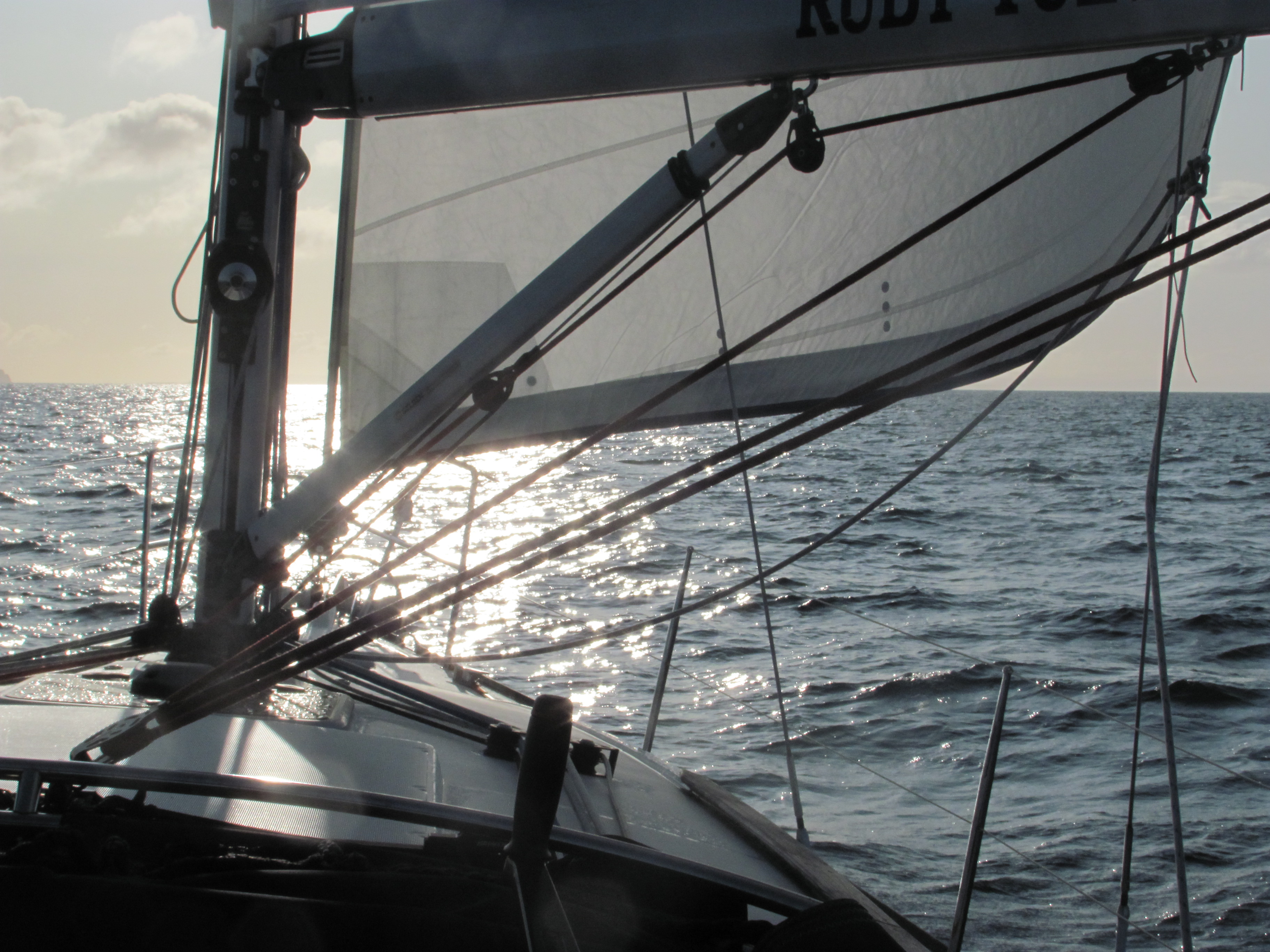
Off to our starboard the conical shape of Ailsa Craig, a volcanic plug from Tertiary times, rises out of the sea. Between it and us, we spot a grey, angular and slightly menacing fisheries patrol vessel slowly motoring back and forth, which the AIS tells us is the Minna. We are not sure what it is after, but just to be on the safe side we check to make sure that our fishing rods are not poking up. Not that we can be accused of depleting the oceans with our abysmal catch record anyway.
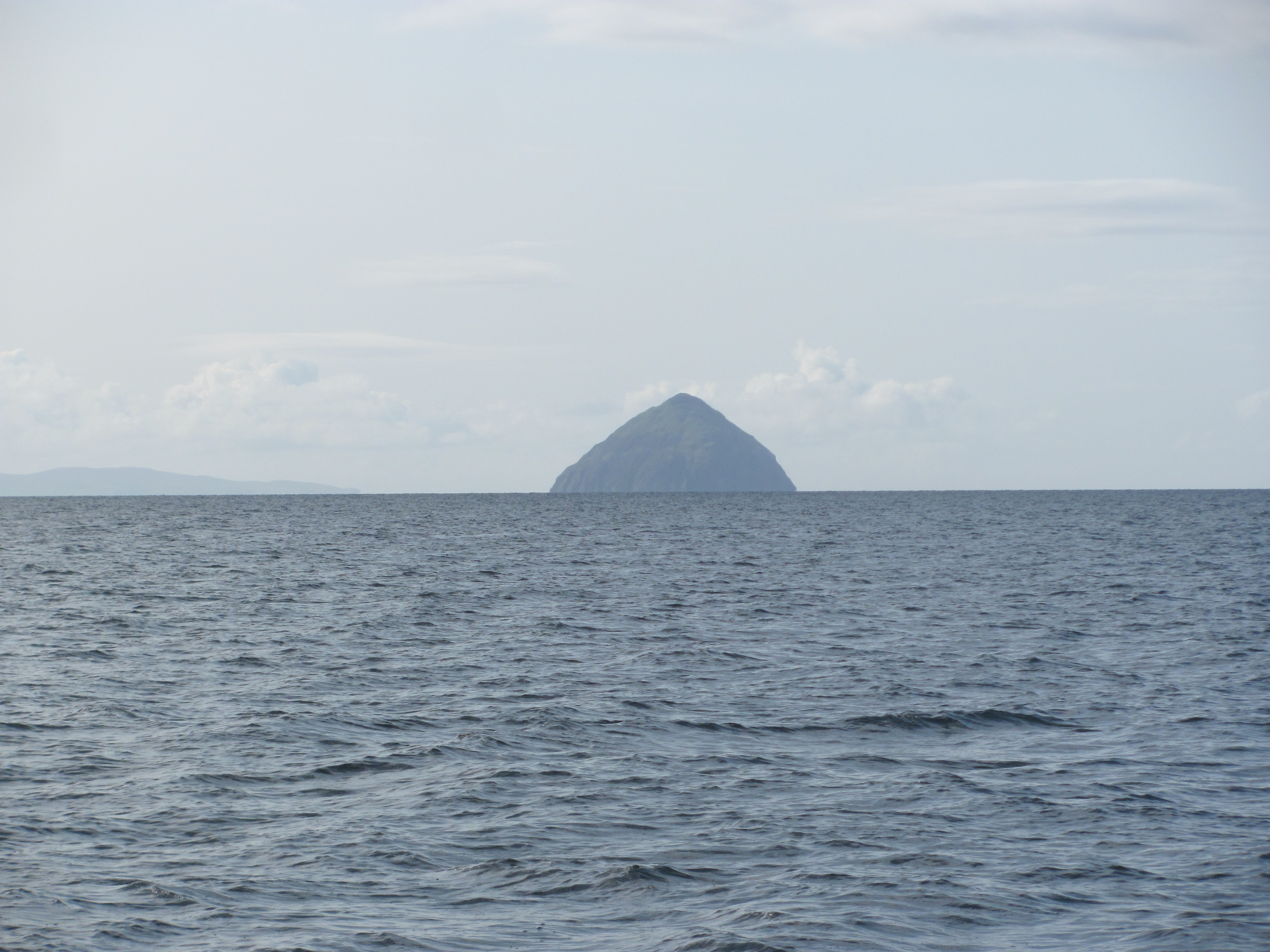
We are both lost in our own thoughts as we realise that this is the last leg of our voyage that started three months earlier and 1200 miles ago near Ipswich. We have been fortunate in having one of the best summers on record in Britain for a long time. Almost too good at times, as the sunny weather had often brought windless conditions when we were reduced to motoring. But we are not complaining.
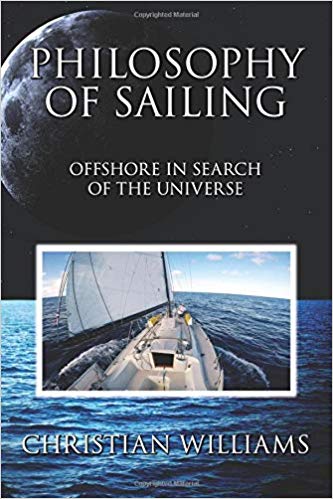
My mind turns to the book I had finished reading the night before with the somewhat pretentious title of The Philosophy of Sailing: Offshore in Search of the Universe, by a Christian Williams, in which he describes his single-handed voyage from California to Hawaii and back again. Despite the title, it has been a good read. At one point, he describes a feeling that he had had, surrounded by nothing but ocean – “An instant of awareness that fled as soon as I had noticed it, and because I had noticed it.” I knew what he was talking about, recalling a similar feeling that I had had sitting on the banks of the Nile in Egypt. While at university, three of us had bought and old Land Rover and had driven it all the way from Wales across Europe and down to Greece, and then by ferry to Egypt. We had camped in a quiet spot on the banks of the Nile one night, and in the morning, I had arisen before the others and had gone for a walk upstream for a few hundred meters before sitting on a boulder and watching the river slowly come to life. For a brief moment, I had felt a feeling of wonder, of being at one with everything around me, before it had disappeared almost as fast as it had come. I had not felt anything like it since. What was it? Just a random firing of neurons internally generated due to fatigue or hunger producing a hallucination that my mind had interpreted in a certain way based on my experiences up to that point? Or was it something else? Or both? And would our future voyages bring a repeat of it?
We round the lighthouse at the southern end of Arran and take the channel between Holy Isle and the main island to arrive at Lamlash, where we drop anchor at the end of a line of mooring buoys, mostly occupied.

I recall the last time I was here, 35 years ago, when I had come with a group of friends on a hill walking holiday, and we had used Lamlash as a base to explore the mountains of Arran. I try to work out the B&B that we had stayed in, but it could have been any one of the houses we can see.
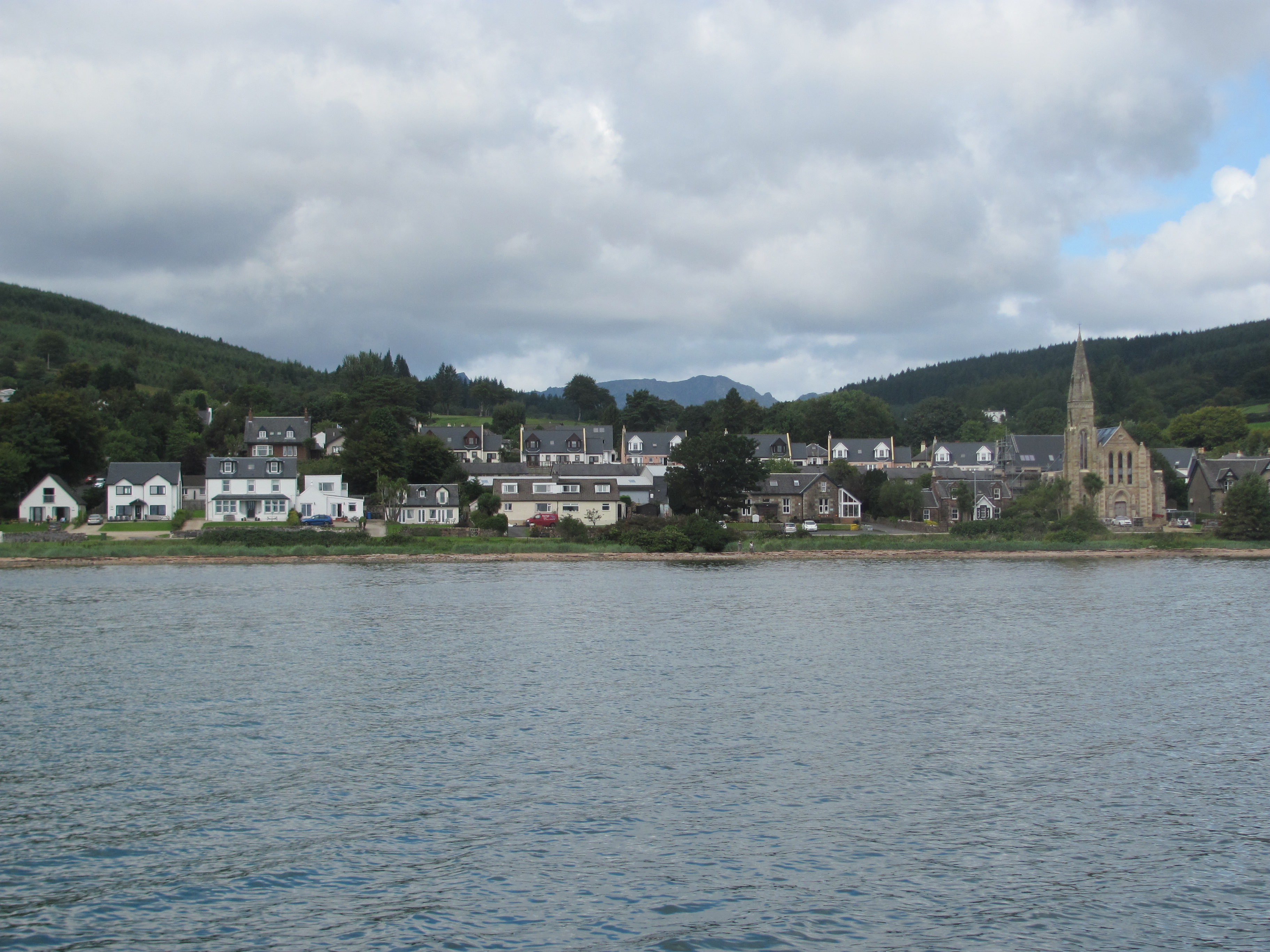
We heat some soup and cut some slices of bread, and sit in the sun eating our lunch and absorbing the view. Apparently Lamlash was where King Harkon of Norway sheltered his ships before the Battle of Largs in 1263 in which he was beaten and sent packing back to Norway, ending the Norse domination of the Western Isles. We try to imagine the Norse warships lined up along the beach, others jostling for a mooring space in the bay, fires being lit as darkness fell, and the Norsemen drinking and singing as they psyche themselves up for the battle against the Scots across in Largs the next day. It all seems so quiet and peaceful now.
Eventually, we pull up the anchor and sail slowly round to the next bay where Brodick stretches itself around the southern side. Dominating the dramatic skyline to the north are the remains of a volcano that erupted in Tertiary times, around 58 million years ago.

The ferry comes in here, so we decide to anchor in the northern shore of the bay out of its way, have a coffee and relax in the sun for the afternoon. We find a spot just below the picturesque Brodick Castle with the massive Goat Fell looming in the background. The castle used to belong to the Hamilton family, but is now National Trust property and is open at certain times to the public.

We make some coffee and lie in the sun reading our books and dozing. There is a murmur of children’s laugher coming from the beach and the smell of woodsmoke drifting over from a fire somewhere beyond. We amuse ourselves for a minute or two by trying to pick out the walkers on the ridge leading up to Goat Fell. A classic wooden yacht called Sephine joins us and anchors between us and the shore. I wonder idly if the letters J and O have fallen off like the ones in Mrs May’s Tory party conference the year before. The four occupants climb into an inflatable dinghy, motor over to a small slipway, clamber ashore and walk in the direction of the woodsmoke, leaving us in our sleepy isolation again. All is good with the world.

Has our voyage given us what we wanted? We have learnt more about the history and geography of country we live in, all the way from Anglo Saxon kings in Suffolk, cathedrals in Canterbury, Roman houses in Dover, Iron Age burial chambers in the Scilly Isles, sunken kingdoms in Wales, Norse kings in the Isle of Man, the tensions of Northern Ireland, the enigmatic Picts, and the ancient Gaelic kingdom of Dalriada. We have met a lot of interesting people and made new friends. More importantly, we have found out more about ourselves, what we are capable of, and what we want to do for the next few years. It has been an awakening, a realisation that there is a new world waiting to be discovered, different to the one we have known up until now.
It has also been a catharsis, partly a synthesis and partly a clearing out of the accumulated mental junk of the last decades to make way for the new. Our voyage has allowed us to distance ourselves from the rat-race and leave behind the stultifying procedures required in the modern workplace, to create time to read and think, preparing us for the next stage of our lives. We feel more alive and relaxed, more in touch with the world, noticing and appreciating the things around us more intensely, and realising that they need to be protected. And yet, it has been more of the beginning of a process rather than an end in itself, a raising of questions rather than finding answers, answers that we may find on future voyages.
It is now late in the afternoon, and clouds are beginning to gather. The sun’s warmth disappears, so we decide to move on. We pull up the anchor, raise the sails for the last time, and set a course for Ardrossan. Almost as though she knows she is nearly home, Ruby Tuesday skims lightly over the waves towards the cluster of buildings on the horizon. As we look back at Arran one last time, the sun dramatically breaks through the cloud and silhouettes the jagged peaks of the island, revealing the Sleeping Warrior who will awake to defend the kingdom of Dal Riada when the time comes. It seems a fitting time and place to pause our voyage along the ancient seaways of Britain.

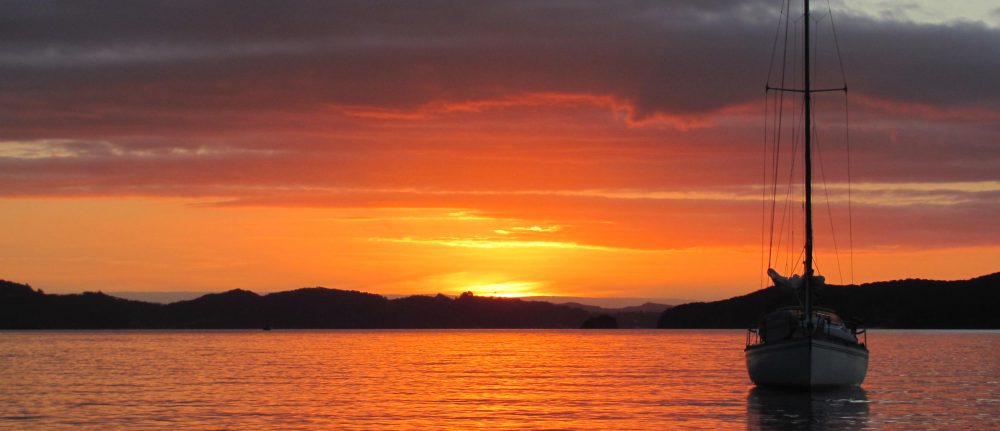
You finished it in style!!
Looking forward to next years adventures already 😀😀
LikeLike
Thanks, Uli. We are looking forward to next year as well. Wish we had carried on this year for a bit longer!
LikeLike
Thanks for sharing your adventure, I’ve found it fascinating. We’ll be leaving the Solent and going round anticlockwise in May next year.
LikeLike
Thanks, David. I hope your trip goes well too. We are probably carrying on around clockwise, so may meet you on the way!
LikeLike